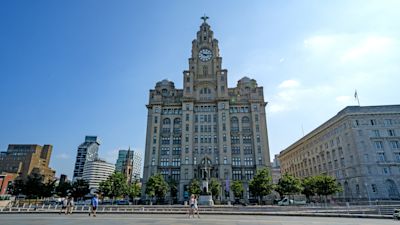Liverpool waterfront: What does Unesco World Heritage status actually mean?

Liverpool has officially been deleted from the World Heritage List after a UN committee found developments threatened the value of the city’s waterfront.
But it's not the first time this has happened. The historic dockland was placed on Unesco's World Heritage in Danger list in 2012.
There are currently 53 sites on the list due to armed conflict and war, pollution, poaching and over-development.
Sites like Dresden Elbe Valley in Germany and the Arabian Oryx Sanctuary in Oman, were stripped of their title within two years of each other.
What does having a World Heritage Status actually mean?
A World Heritage site is a natural or cultural landmark that has been selected by the United Nations Educational, Scientific and Cultural Organization (UNESCO).
They can be located anywhere in the world and are deemed worthy of preserving for both present and future generations.
Some of the most recognised UNESCO world heritage sites today include Machu Picchu, in Southern Peru, and the Taj Mahal in the Indian city of Agra.
What are the advantages of having World Heritage status?
Once a site has been recognised as having this prestigious title, it immediately drives more tourists, travel writers and other news organisations to the area. For many countries, this could help to bring new economic benefits.
As well as this, it can generate funds for restoration and preservation of the site.
The title also means it is protected under the Geneva Convention against destruction or misuse during wartime.
How many Unesco World Heritage Sites are located in the UK?
There are 26 cultural world heritage sites, four natural and one which is a mixture of the two in the UK. Here is a full list:
Natural
Dorset and East Devon Coast
Giant's Causeway and Causeway Coast
Gough and Inaccessible Islands
Henderson Island
Cultural
Blaenavon Industrial Landscape
Blenheim Palace
Canterbury Cathedral, St Augustine's Abbey, and St Martin's Church
Castles and Town Walls of King Edward in Gwynedd
City of Bath
Cornwall and West Devon Mining Landscape
Derwent Valley Mills
Durham Castle and Cathedral
Frontiers of the Roman Empire
Gorham's Cave Complex
Heart of Neolithic Orkney
Historic Town of St George and Related Fortifications, Bermuda
Ironbridge Gorge
Jodrell Bank Observatory
Maritime Greenwich
New Lanark
Old and New Towns of Edinburgh
Palace of Westminster and Westminster Abbey including Saint Margaret’s Church
Pontcysyllte Aqueduct and Canal
Royal Botanic Gardens, Kew
Saltaire
Stonehenge, Avebury and Associated Sites
Studley Royal Park including the Ruins of Fountains Abbey
The English Lake District
The Forth Bridge
Tower of London
Mixed
St Kilda
Why has Liverpool Waterfront lost its status?
The area was placed on the List of World Heritage in Danger when the committee decided the Liverpool Waters development, planned for the city’s northern docks, was a potential danger to the site.
The committee, made up of representatives of 21 countries, was asked to make the decision after a report said “inadequate governance processes, mechanisms, and regulations for new developments in and around the World Heritage property” resulted in “serious deterioration and irreversible loss of attributes”.